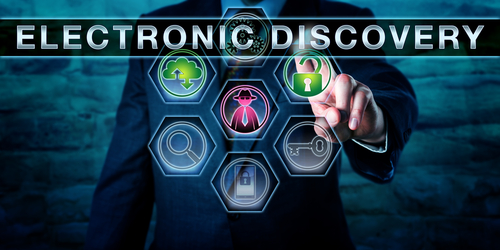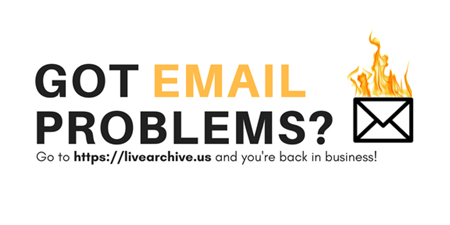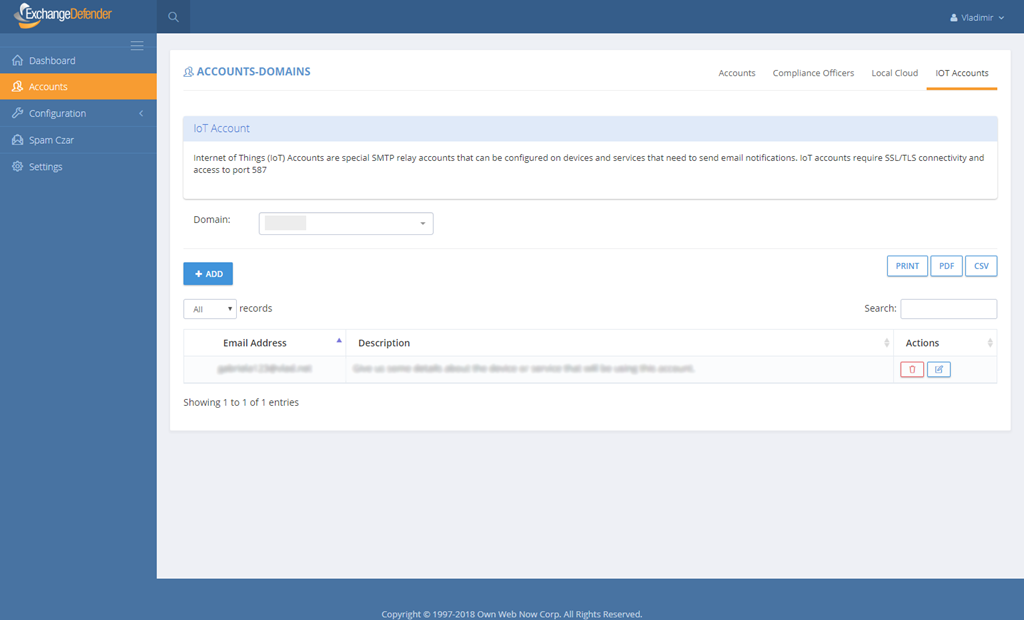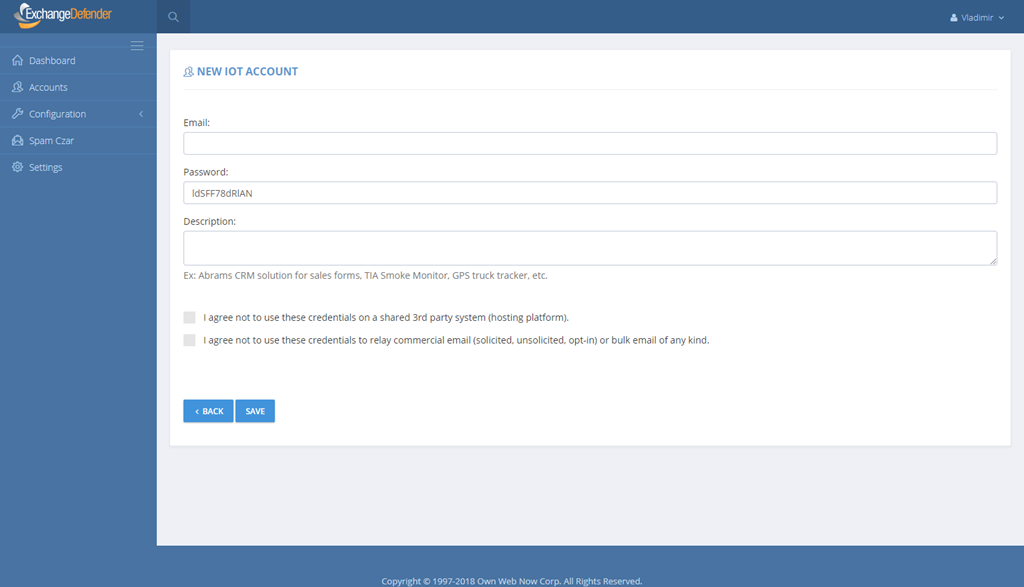ExchangeDefender’s New Support Groove
Psst. It’s time for better support.
ExchangeDefender has been working on a massive infrastructure upgrade and reengineering project since early 2017 and we’re happy to report that we’re providing better service and offerings than at any time in the past. Now we’re thrilled to announce the launch of our newest support portal that will converge email, chat and support ticket activity in a single, process-driven solution.
This means we will be able to help you better, faster, and in realtime. Tomorrow, June 1st, at noon… we will launch our new support UI:
Responsive User Interface
Our entire UI is now built on a responsive user interface that looks great no matter what device (desktop, browser, mobile, tablet) you use it from. No more smudged and unreadable fonts, no more zooming, panning and scrolling. Best of all, much faster and refresh-free UI!Fewer Clicks, Faster Access
Hate having to click 80 times to get to what you need? So do we – and most people access ExchangeDefender on a touch-enabled device these days! We listened and designed a new portal that gets you where you need to go faster.More Intuitive Design & User Experience
You no longer need a masters degree in CRM software to navigate around the platform, anyone can do it. No more scrolling through pages of text and form fields, everything you need it at your fingertips.
Friday, Friday, Friday… at noon!
As mentioned above, the new UI is designed to help real people, doing real work, in the real world – not just office power users on arcane hardware (don’t worry, we got shortcuts and powerups for you as well). In order to accomplish that, everything in the new interface is intuitive. Want to create a new ticket? Here is how:
Same behavior you have on the desktop is the same behavior you’ll have on your tablet and phone. Best part is, we are not taking anything away, just adding more useful content that is always at your fingertips. For example, take a look at the new ticket screen:
We have removed the clutter, emphasized the important announcements, improved page loading time, require far less scrolling and the elements you need will automatically load into view as you start a service support request.
You’ve probably seen paper after paper illustrating how much modern consumers rely on self-help and self-service sites rather than picking up the phone, sending an email or opening up a support request. With our integrated FAQ, smart answers and realtime resources (including chat) we will be able to help you with the routine and simple tasks without having to wait. Or scroll.
Working on a bunch of issues at once? Our system will now allow you to quickly access all of your tickets and see updates without opening a million tabs or scrolling for days.
We have added a bunch of new conveniences that allow for realtime results, automatic refresh and quick updates.
The big idea with the new portal is that many problems, projects, issues or inquiries can be handled much faster without having to switch from ticket to ticket, system to system, or screen to screen. Most of the service is simply acknowledging that the issue has been received, acknowledged, reviewed and assigned to the right person that can help right now.
If you’re used to the old way of doing things, and don’t look too closely, not much will change. It’s still all there, just much cleaner and simpler:
Working on tickets and on teams is now simpler than ever. We got rid of the old one-owner one-client one-issue model and can now easily add employees on this side that can help. Unlike the old days, the issue and responsibility doesn’t end at the point of assignment – everyone is still accountable to the client and now we can respond faster and work on an issue as a team.
You will notice that our ticket update screen has gotten a lot simpler as well. When you update tickets, you won’t see an entire page refresh either. There is a reason for that: We are moving towards full realtime portal – meaning we can start supporting users in a chat and reduce the amount of time wasted searching, navigating and waiting on the browser or page to load.
General Data Protection (GDPR) and ExchangeDefender: Get your resources to demonstrate compliance
ExchangeDefender, at it’s core, is all about protecting our clients: it should come as no surprise that we are big fans of GDPR. If you haven’t been inundated by GDPR, or by a million “we’ve updated our privacy policy” emails from every web site you’ve ever signed up for, or you’ve landed here simply because the deadline is tomorrow, Friday, May 25th: rest assured we’ve got you covered.
ExchangeDefender is 100% compliant with GDPR. You are covered as are your clients on ExchangeDefender and we have presence across European Union to handle any issues or complaints that come up as a result of GDPR implementation.
What you need to know
GDPR, essentially (and no, this is not legal advice), is a European Union data privacy regulation that turns the tables on marketers and gives residents of EU very specific rights and control over their personal data. The regulation is very broad in terms of scrutinizing everyone that may be holding (controller) or managing/processing (processor) personal data and ExchangeDefender fits both of those roles at times depending on the product or service we’re talking about.
If you’d rather do without me talking at you for 6 minutes, we have a ton of other resources that you can share with your clients. I would start with this document available for download here:
What you need to do now
1. Start by reviewing our new Privacy Policy. I know, I know, you’re done with
2. Contact us if you’re seriously building out a business around GDPR and get our marketing folks to hook you up with branded collateral (minimum client count
3. Review our GDPR collateral, particularly the webinar with the deep dive of the ExchangeDefender implementation. This is the most important thing you could do but it’s 27 minutes long and I know everyone doesn’t have that kind of time or attention span – I get it – but if you’re seriously working with us and need GDPR assistance, you will have to go through the training eventually.
Where to go next
We are very excited about GDPR and have put significant resources to design our products and services around the regulation because we believe it will have a broad impact well beyond Europe. Privacy, data integrity, right to be forgotten, right to withdraw consent, right to find out what sort of information companies have about you – those are fundamental rights in our opinion.
And if you ignore them the penalties are going to be extensive.
What we’re choosing to do at ExchangeDefender is to create a service around protecting people on the Internet – not just from SPAM but really safeguarding all communication you do as a business. Take a look at our GDPR resources and see how we can get you started on the same path – at the very least you can use our reach and resources to comply with GDPR.
The false sense of cloud security: “I don’t need backups or archiving, we’re in the cloud.”
One of the most common misconceptions we get to deal with in the email business is the notion that the almighty cloud eliminates the need for backups, redundancy, compliance archiving, and disaster planning in general. Nothing could be further from the truth so please share this checklist with your clients and decision makers so they can make informed decisions about how much protection is needed for critical business data.
Now, let’s tear apart the myths we hear most often:
It’s in the cloud so it’s already backed up. You will not find a single cloud service provider that will offer their backup policies in explicit detail. This is not just a matter of secrecy (exposing the network and storage design) but also of implementation: some services just don’t have a backup only a lagged copy. Never, ever, assume that your cloud provider cares about your data more than you do, it’s no coincidence that the first thing you do with every service you sign up for is a mandatory acceptance of terms of service that you’ve likely never read. Your data is your sole responsibility.
It’s in the cloud and they say it’s there forever. Sometimes marketing gets falsely associated with the actual service deliverables: “You will never have to delete email to make space” doesn’t translate into “Your email will never disappear” – all major email providers have a well documented trail of losing clients mail, deleting their mailboxes “for policy violations” and otherwise shunning any responsibility.
It’s in the cloud so someone is actively managing it. Cloud service providers manage the cloud service, management of your personal data is often the secondary concern. That sounds harsh so allow me to elaborate the top down view: Imagine your service just crashed, massive catastrophe: What is your primary concern? Restoring access to service to send/receive email, or restoring clients data from 5 years ago? Now align those priorities with the budget: What is more important to the cloud provider: service operation or access to old data? Many services are even pushing for not keeping all of your data in the cloud at all, the notion of archive boxes and focused views is all about not having the responsibility for your data.
It’s in the cloud so it meets compliance. Your regulatory compliance requires assurance that data could not have been deleted. That kind of assurance only comes with services like ExchangeDefender Compliance Archiving which archives messages before anyone has a chance to tamper or delete the data. Furthermore, the backend system for an archiving or compliance solution is radically different because of the liability: companies that insure confidential data storage are far more concerned about redundancy, backups and data loss than they are about the uptime and service availability.
Now that the myths surrounding the false sense of cloud security are shattered, let’s look over a brief plan you need to implement to safeguard your data:
1. Document everyone with access to email.
2. Come up with a policy for adding/removing employee email.
3. Identify any regulatory compliance requirements.
4. Identify business case scenario requiring long term archiving.
5. Document who has access to what and how changes are tracked.
6. Come up with a data retention and data backup plans.
7. Understand the law and security, make neccessary adjustments.
8. Designate a Compliance Officer to manage everything.
9. Test your backups and compliance archiving routinely.
10. Periodically audit everything in the previous 9 steps.
Truth is, there are hundreds of steps in cloud security management for each of the 10 items I listed above: The goal isn’t to give you a blueprint, the goal is to make you aware of complexities and the issues that can come up when the basics are ignored. If you would like the details, give us a call, email is what we do for a living and (unfortunately) our expertise is developed over the years of cleaning up our clients neglect of their email infrastructure – let us and our partners know how we can help.
Top 5 Mistakes Companies Make With Compliance
ExchangeDefender Compliance Archive was designed as a blend of services and products to help organizations achieve regulatory compliance. This complex process is always evolving with new regulatory requirements, changes in organization structure, and unique reporting requirements.
At ExchangeDefender we specialize in helping organizations with their eDiscovery needs. Here are the biggest fallacies we hear all the time:
“We have a backup”
Email backups are not sufficient for nearly any modern regulatory compliance requirements for email retention. Not only can the messages be deleted before backups run, but running reports across the entire organization is next to impossible, not to mention excessively expensive. We recently assisted a partner managing a small 15 employee office in their backup and restore process to locate a message from 5 years ago, costing the organization over $18,000 in IT labor alone.
“We have a product/compliance service”
Having a product or a service subscription is different from being in compliance with regulatory requirements. The difference between having a product and being in compliance is similar to “We have a CPA” and “We have filed our tax returns on time” – mistaking the two can be costly and dangerous.
“We are never going to need that”
Most organizations downplay the importance of long term email archiving and eDiscovery. An overwhelming majority of subscribers to our eDiscovery service don’t have a specific regulatory requirement at all, they do it to effectively defend themselves from legal threats that are all too common these days. With email being the gateway for all corporate communication, it is the first place record retentions, legal holds, and subpoenas are issued for electronic records and there needs to be a system in place to effectively deliver that information.
“What we have is enough”
Regulatory compliance goes far beyond poorly interpreted recommendations and laws. It is a process of producing reports, identifying problems, and assuring that corporate communications policies are being followed, or at least addressed, in case there is an issue. If the organization does not have people in charge of managing the compliance on a monthly basis or there are no current reports searching for dangerous or sensitive content or there is no ongoing maintenance or an established incident record – the organization is likely out of compliance even if they purchased the right software or signed up for the right service at one point.
“We have a someone managing that”
Someone is not a good person to rely on when you get a subpoena and they are even more difficult to get into a courtroom. Plus, how much would you trust them to demonstrate expertise and defend the implementation of the compliance archiving and eDiscovery solution? Many organizations make a mistake of thinking that just signing up for a service or purchasing a product is sufficient for compliance but it’s really just a starting point. You need the personnel, product, service, and reporting to fully achieve regulatory compliance.
ExchangeDefender Compliance Archiving and eDiscovery are a part of a professional service that helps get your organization and its means of communication on path to achieving regulatory compliance. Whenever someone is fully confident that they have their compliance in order we simply ask them to “show me your last Compliance Officer Report” and almost everyone struggles to produce the report or even name the Compliance Officer, the processes being used for archiving, the type of data protection, or the way in which the entire process is tested and audited. With ExchangeDefender Compliance Archiving, you not only get a service, you get a partner that will work with you every step of the way in achieving your regulatory and organizational needs for proper record keeping.
Rough week with Windows Updates? DR is in!
With technology you really cannot avoid disasters, all you can do is prepare and test all backup plans when things go wrong. IT people in charge of Windows systems have had so many issues with Microsoft updates over the years that Microsoft consolidated all of their patching to happen on the second Tuesday of every month – and this months update disables network cards (kb 4103718) on many Windows PCs – oops! This got us to thinking, how many of you are effectively planning and implementing all the ExchangeDefender services to resume work when disaster strikes? We make it as simple as a bumper sticker, but it’s all in the planning and effective onboarding:
Outlook Web App/Access: Outlook Web App has almost the entire functionality of Microsoft Outlook and it’s included for free with your ExchangeDefender Exchange subscription. Problem is, most users do not know the server name or how to find it in an outage or on the road. We advise our partners to setup a splash page, a link or a dropdown on the clients web site or their own MSP site that leads the clients to the right location.
LiveArchive: LiveArchive is included in ExchangeDefender and it’s designed exclusively as a business continuity solution to be used when Exchange and other email servers go offline. Server down? Just point your browser to https://livearchive.exchangedefender.com and all your email is right there even if it’s not showing up in your Outlook due to an outage.
Mobile Device: Let’s face it, you won’t be able to pull out your monitor and workstation and take them down to Starbucks when the disaster strikes. Prepare your mobile devices to function as remote offices. You can configure both work Outlook and LiveArchive devices up front and just set them as Disabled or dormant accounts. Doing so allows you to simply “turn on” the mobile feature instead of trying to walk someone through the device setup while they are on the speakerphone and you already have their entire office waiting too.
Let’s be real for a second: We know that disasters in IT happen. Mechanical machines that these incredibly complex systems run on are prone to failure: so instead of gambling that the problem will not occur, why not just build it into the onboarding system and take care of the inevitable situation right now where you can do so at your own pace and keep everyone happy.
Achieving eDiscovery and Compliance Archiving requirements in 5 steps
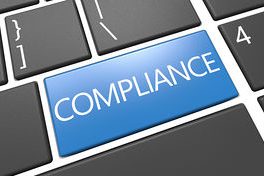 Signing up for the Compliance Archiving service is the first step in reaching regulatory compliance when it comes to email retention and eDiscovery. The following five steps will put you on the right path of achieving and maintaining that compliance:
Signing up for the Compliance Archiving service is the first step in reaching regulatory compliance when it comes to email retention and eDiscovery. The following five steps will put you on the right path of achieving and maintaining that compliance:
1.Understand what you need to keep and for how long.
Your regulatory/oversight body will provide details about how long you are required to hold on to your email. In our experience with Compliance Archiving, you also need to pay attention to the Statue of Limitations that your business may be liable for. Very often the discovery process for lawsuits includes legal hold requests and record requests that are longer than regulatory requirement.
2. Get the right product and implement it correctly.
Your compliance has to be all encompassing – all email must be archived. With ExchangeDefender Compliance Archiving all of your inbound, outbound, and interoffice email is collected, archived and protected in the cloud. You can search for any document at any time and be certain that it has not been tampered with and that no emails have been deleted – something that sets our eDiscovery/archiving apart from backup solutions.
3. Keep an eye on it to make sure it works
Just setting up a compliance archiving solution is not sufficient enough. there is no protection for technical negligence in regulations. You are expected to keep your mail server and everything connected to it secure. Penalties for data loss, compromised credentials, and data leakage are severe and are not a valid excuse for not having compliance.
4. Create Compliance Officer reports frequently.
Compliance Officer within your organization must create reports on a monthly basis to assure no confidential information is allowed to leave the organization. Some industries have an even more specific and severe restriction on the type of communication that can take place over email and what sort of information can be sent – compliance officers run eDiscovery reports to assure nothing confidential is being shared and address problems and exceptions routinely
5. Routinely audit the entire system to maintain compliance.
Organizations grow and change over time and remaining compliant with new regulations is key. ExchangeDefender Compliance Archiving service often sends out advisories, best practices, tips and suggestions to adjust your process because you are always expected to be in full compliance with the latest requirements. Every time you add a new employee or change your mail server configuration or new lines of business – compliance must extend to cover these new records that may be of interest to someone down the road.
“One of the biggest mistakes organizations make with regulatory compliance is thinking that it’s a service, product or a one-time effort: quite the opposite!”
Achieving regulatory compliance means implementing the right product, conducting routine audits, complying with changes in regulations and having full control of the environment where messages are stored as employees come and go.
In the event of an audit, you will be asked to produce record and you will be judged on your ability to provide specific records that are requested, not the best effort you made in trying to achieve compliance. Considering the fines and legal complications, it makes sense to revisit the five steps outlined here annually and make adjustments as necessary.
ExchangeDefender introduces email delivery service for IoT, devices, printers and services.
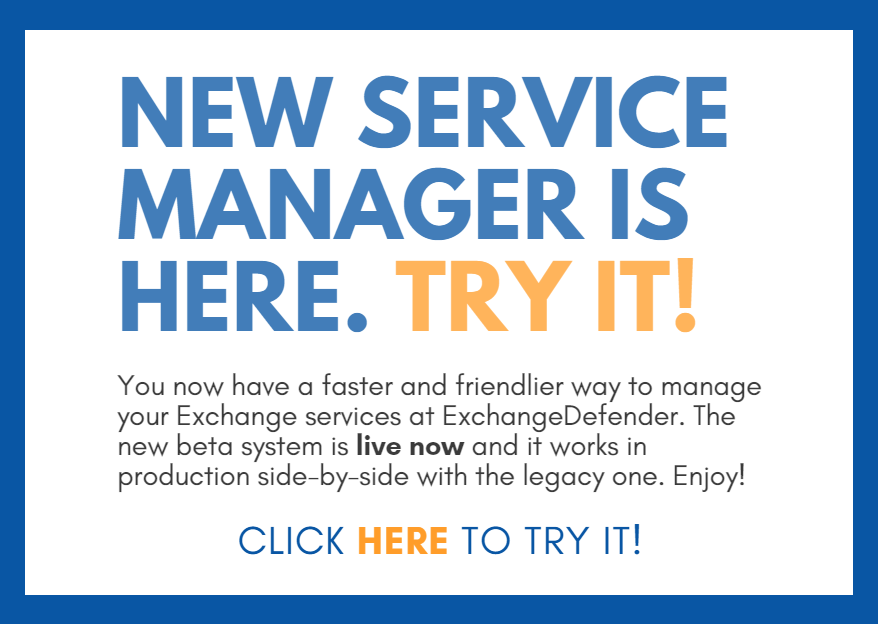 ExchangeDefender (Beta) production is really picking up steam with the modern codebase and we wanted to launch a line of solutions to problems that have either been a challenge over the years or are expected to become a management issue going forward. One such area is the subject of service accounts that are only used by devices, printers, CRM solutions and notification services. We now have a separate system designed to allow SMTP-notification devices and services to relay through the ExchangeDefender network.
ExchangeDefender (Beta) production is really picking up steam with the modern codebase and we wanted to launch a line of solutions to problems that have either been a challenge over the years or are expected to become a management issue going forward. One such area is the subject of service accounts that are only used by devices, printers, CRM solutions and notification services. We now have a separate system designed to allow SMTP-notification devices and services to relay through the ExchangeDefender network.
Quick rewind: Long, long ago during the great SMTP vs. UUCP dark ages, message exchange was trusted and trivial. But once it started getting abused by spammers and hackers, each ISP decided to implement their own flavor of SMTP traffic restrictions and regulations to curb the abuse. It became exceedingly difficult to relay mail from a consumer and business-level broadband connection but as more services and devices come online they defaulted to the standard SMTP protocol to send notifications and messages. Unfortunately, because ISPs still have their policies that are constantly shifting, trusted third party SMTP solution is needed but managing it is not something that is viable as a business model.. yet.
Today we are happy to announce that our clients will be able to allow devices and services to relay mail back to themselves using our SMTP relay service.Without having to mess with complex Exchange settings or ISP restrictions. Just create a relay credential, set the SMTP client in the SSL/TLS mode and use a special SMTP server on our network to relay mail via 587 (ISP may still be filtering that port, but that should be easy to fix)
-
New feature is available in the beta portal under Domain Admin > Accounts > IoT Accounts:
-
Just add a new account and you will be prompted for some basic information such as email address and description of the device/service used.
You will notice some important warnings/restrictions about this service (No, you can’t be a spammer or use this in a shared environment where it can be hacked) and that’s literally all you need to get started. It’s really just that simple. Best part? No management, licensing or tools to set up: just the ExchangeDefender SMTP relay network.
This feature is supported (even though it’s beta) and it’s free!
We hope you enjoy this and would welcome suggestions about which features you’d like to see in ExchangeDefender now that you have a better idea of where we’re going with the development of our messaging platform. We’re obviously going to tweak these services as we get a better idea how they are used and how much management they require on our end.









